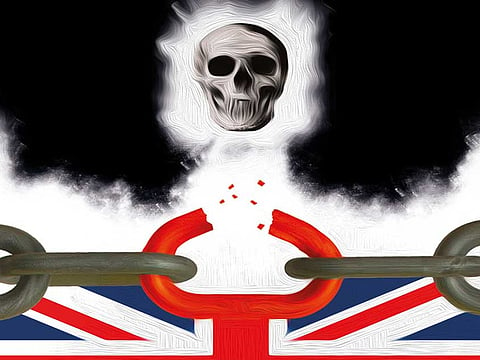The problem of tackling terror
It is vital that resources are now directed at mending the broken links in the vital chain of intelligence in the UK

Three terror attacks in three months have left the British security services desperately searching for ways to prevent another atrocity being committed in our streets. But the frightening reality is that terrorism has become impossible to police. The attacks in Westminster, Manchester and London Bridge were carried out by extremists who had nothing in common apart from a view of the world that places the murder of innocent people at the heart of a warped ideology. Their different ages, ethnicities and social backgrounds demonstrate the size of the task now facing counter-terrorism agencies in this country.
The Westminster attacker Khalid Masoud, in his early 50s, had for many years lived a relatively stable life in the home counties. Manchester suicide bomber Salman Abedi, a 24-year-old Mancunian, had fought on the frontline in Libya; while London Bridge ringleader Khuram Butt, a 27-year-old from East London, was an extremist living so much in plain view that he had featured in a Channel 4 documentary on extremism. These men were all born or raised in Britain and radicalised in very different ways. Although Scotland Yard and MI5 were aware of them, there is no evidence that the men ever knew each other. Their circumstances comprise such a wide spectrum of behaviour, associations and life histories that they do not fit a straightforward terrorist profile. Of urgent concern for the security services is understanding why Masoud, Abedi, Butt and the third London Bridge attacker, Yousuf Zaghba, a 22-year-old Moroccan-Italian, were all known to them but were not stopped. The answer is that the security services were — and are — drowning in the sheer volume of police reports, intelligence and referrals from members of the public.
In essence, MI5 is trying to establish the moment when a nonviolent view of the world turns to thoughts of terrorism Scotland Yard’s counter-terrorism command, MI5 and Government Communications Headquarters share a database of 23,000 subjects of interest. Of these, they have prioritised 3,000 who they believe pose the greatest threat. Under MI5’s traffic-light system, a further 500 are given the highest priority and are being investigated as part of ongoing counter-terrorism operations. But the security services must also contend with tens of thousands of other names that have been brought — or should have been brought — to their attention, including 3,000-4,000 arrests and many more who have been stopped and questioned by the police. There are people who may have, from time to time, expressed extremist views, which in turn have led to referrals to the Prevent programme (8,000 in the last year) or the anti-terror hotline.
The security services and Prevent teams are inundated with referrals, all of which must be investigated. At the same time police and MI5 officers are already committed to hundreds of counter-terror investigations and inquiries. MI5 must try to assess which of the thousands of cases matching the government’s fluid definition of extremism deserve resources. In essence, they are trying to establish the crucial moment when a nonviolent view of the world turns to thoughts of terrorism. The easier cases are those that exhibit a criminal profile: Attempting to obtain weapons, buying explosives ingredients or evidence of attack planning. And these are indeed the clues that have led to 18 terror plots since 2013 being thwarted, including five in the last two months. But the dumbed-down terror attacks of Westminster and London Bridge are examples where there may be just days between planning and execution. Butt illustrates exactly how difficult the science of terrorist detection has become: Even when someone gleefully advertises their extremism, the police still need intelligence of attack planning before they can act.
There are hundreds of young men like Butt who express extremist views but stay on the right side of the law. Butt had been risk-assessed, but dismissed because he had not shown any interest in domestic terrorism. Perhaps the police were beguiled by the belief that members of groups such as Anjem Choudary’s Al Muhajiroun, or those following the Islamist clerics Abu Hamza and Abu Qatada, observed a “covenant of security”, whereby Islamists living in the United Kingdom vow not to carry out acts of domestic terrorism.
Theresa May’s plans for tougher control orders, longer prison sentences or human rights-busting deportations would not have stopped any of the recent terror attacks. These measures all require intelligence that demonstrates that an individual poses a threat. None of the recent killers had been assessed in such a way, and so were not subjects of interest placed under surveillance.
Years of counter-terrorism policies directed against Islamic communities have made young Muslims deeply suspicious of the police in the UK. It is unfortunate but true that before each of the major terror attacks committed in the UK since and including the 7/7 London bombings in 2005, the security services had knowledge of, or even dealings with, at least one of the suspects. In each case it was a lack of hard intelligence that left the men unhindered to carry out their killings. It is vital that resources are now directed at mending the broken links in the vital chain of intelligence that flows from the community to the authorities.
— Guardian News & Media Ltd
Robert Verkaik, a freelance security correspondent, is the author of Jihadi John: The Making of a Terrorist.
Sign up for the Daily Briefing
Get the latest news and updates straight to your inbox


